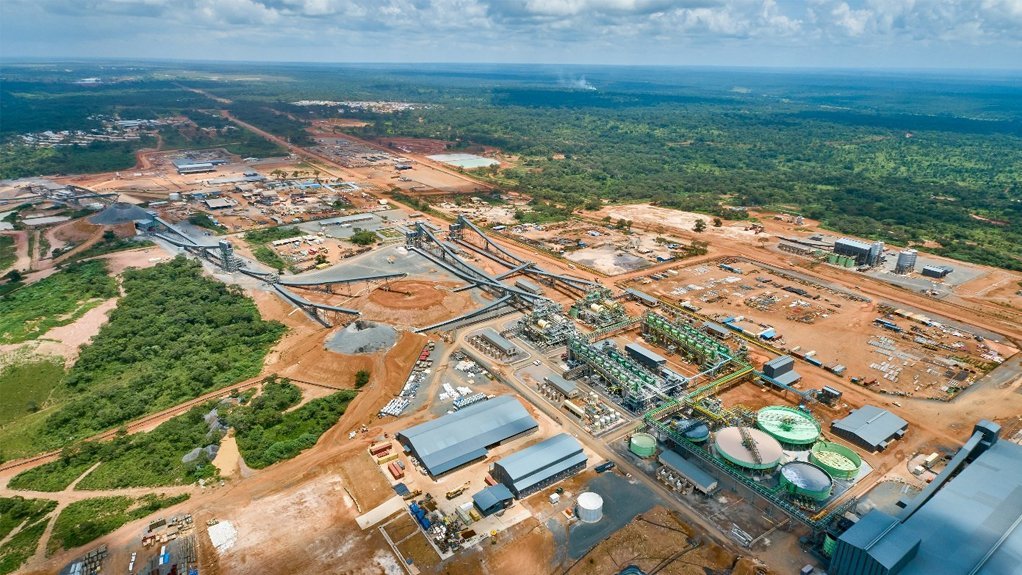
+27 11 441 1111
SRK House, 265 Oxford Road, Illovo, 2196, South Africa

Kamoa-Kakula copper project, Democratic Republic of Congo – update


Name of the Project
Kamoa-Kakula copper project.
Location
The Kolwezi district of Lualaba province, in the Democratic Republic of Congo (DRC).
Project Owner/s
Kamoa Copper – a joint venture (JV) between base and precious metals developer Ivanhoe Mines, with 39.6% ownership; Zijin Mining Group, with 39.6% ownership; Crystal River Global, with 0.8% ownership; and the DRC government, with 20% ownership.
Project Description
Ivanhoe Mines has announced outstanding economic results in the independent integrated development plan for the tier-one Kamoa-Kakula copper project.
The Kamoa-Kakula Integrated Development Plan 2020 comprises three development scenarios: the Kakula definitive feasibility study (DFS), the Kakula-Kansoko prefeasibility study (PFS) and the Kamoa-Kakula preliminary economic assessment (PEA).
Kakula
The Kakula DFS proposes the development of a Stage 1, six-million-tonne-a-year underground mine and surface processing complex at the Kakula deposit, with a capacity of 7.6-million tonnes a year built in two modules of 3.8-million tonnes a year. For this option, 110-million tonnes will be mined at an average grade of 5.22% copper, producing 8.5-million tonnes of high-grade copper concentrate and containing about 10.8-billion pounds of copper.
Kakula-Kansoko
The Kakula-Kansoko 2020 PFS evaluates the development of mining activities at the Kansoko deposit in addition to the Kakula mine, initially at a rate of 1.6-million tonnes a year, to supply the concentrator at Kakula, eventually ramping up to six-million tonnes a year as the reserves at Kakula are depleted.
Kamoa-Kakula
The Kamoa-Kakula 2020 PEA assesses an additional development option of mining several deposits on the Kamoa-Kakula project as an integrated, 19-million-tonne-a-year mining, processing and smelting complex, built in multiple stages.
An initial six-million-tonne-a-year mining operation will be established at the Kakula mine on the Kakula deposit, which will be followed by a separate six-million-tonne-a-year mining operation at the Kansoko mine. A third, six-million-tonne-a-year mine will then be established at the Kakula West mine, in addition to a fourth initial mine in the Kamoa North area operating at one-million tonnes a year. The processing plant will be built in five modules of 3.8-million tonnes a year, with an ultimate capacity of one-million tonnes a year.
As the resources at the Kakula, Kansoko and Kakula West mines are mined out, production will begin sequentially at five other mines in the Kamoa North area to maintain throughput of 19-million tonnes a year to the existing concentrator and smelter complex.
Every mining operation is expected to be a separate underground mine, with a shared processing facility and surface infrastructure located at Kakula. Material will be transported to the Kakula processing complex using a system of overland conveyors. Included in this scenario is the construction of a direct-to-blister copper smelter with a capacity of one-million tonnes of copper concentrate a year.
Potential Job Creation
Once the two processing plants at Kakula are operating, Ivanhoe expects to employ almost 2 000 permanent Kamoa employees.
Net Present Value/Internal Rate of Return
The Kakula DFS yields an after-tax net present value (NPV), at an 8% discount rate, of $5.5-billion and an internal rate of return (IRR) of 77% over a 21-year mine life, with a payback of 2.3 years.
The Kakula-Kansoko PFS yields an after-tax NPV, at an 8% discount rate, of $6.6-billion and an IRR of 69% over a 37-year mine life, with a payback of 2.5 years.
The Kamoa-Kakula PEA yields a potential after-tax NPV, at an 8% discount rate, of $11.1-billion and an IRR of 56% over a mine life of more than 40 years, with a payback of 3.6 years.
Capital Expenditure
The Kakula DFS estimates peak funding at $775-million, remaining initial capital costs at $646-million and expansion capital costs at $594-million.
The Kakula-Kansoko PFS estimates peak funding at $848-million, remaining initial capital costs at $695-million and expansion capital costs at $750-million.
The Kamoa-Kakula PEA estimates peak funding at $784-million, remaining initial capital costs at $715-million and expansion capital costs at $4.46-billion.
Planned Start/End Date
The initial production of copper concentrate at the Kakula mine processing plant began on May 25, 2021, and achieved commercial production on July 1, 2021.
The expansion of the Kakula processing plant will be brought forward from the first quarter of 2023 to the third quarter of 2022.
Latest Developments
Ivanhoe Mines has started earthworks on a 500 000 t/y direct-to-blister flash smelter at the Kamoa-Kakula copper mining complex.
The smelter – with a nameplate capacity to produce 99%-pure blister copper – has been sized to process most of the copper concentrate forecast to be produced by Kamoa-Kakula's Phase 1, Phase 2 and Phase 3 concentrators.
The smelter will be built adjacent to the Phase 1 and 2 concentrator plants and is designed to use technology supplied by Metso Outotec, meeting the International Finance Corporation’s emissions standards.
Once in operation, the smelter is expected to enable Kamoa-Kakula to reduce its cash costs per pound of payable copper produced by about 10% to 20%, driven by significantly reduced transportation costs, reducing overall volumes shipped by more than half, as well as more favourable tax treatment, and the recovery and sale of sulphuric acid as a by-product revenue.
The Phase 3 expansion of Kamoa-Kakula complex is also on track to take the mine into third place on a global copper production scale, increasing yearly copper production capacity to about 600 000 t by the fourth quarter of 2024.
Kamoa-Kakula’s Phase 3 will comprise two new underground mines known as Kamoa 1 and Kamoa 2, as well as the initial decline development at Kakula West.
A new, five-million-tonne-a-year concentrator plant will be established adjacent to the two new mines at Kamoa, taking total processing capacity to more than 14-million tonnes a year.
Going forward, the existing Phase 1 and 2 concentrators will be debottlenecked and operating at a combined throughput of 9.2-million tonnes a year by the second quarter of 2023, which is expected to increase Kamoa-Kakula’s copper production to more than 450 000 t/y.
Meanwhile, negotiations for an amendment to Kamoa-Kakula’s offtake arrangements for Phase 2 production are nearly complete, with copper product currently being shipped under existing, Phase 1 agreements.
Kamoa-Kakula’s Phase 3 expansion will be powered by hydroelectricity through Kamoa Copper’s Inga II partnership, which is expected to generate an additional 178 MW of renewable hydropower for the DRC.
Key Contracts, Suppliers and Consultants
DFS/PFS/PEA:
OreWin (overall report preparation, mining, logistics, power and economic analysis); China Nerin Engineering (smelter design and basic engineering contract for the smelter); DRA Global (mine surface infrastructure and metallurgical processing); Epoch Resources (tailings storage facility design); Golder Associates (hydrology models and recommendations); KGHM Cuprum R&D Centre (technical adviser on certain mining methods and geotechnical); Outotec Oyj (smelter technology); Paterson and Cooke (paste backfill plant design and surface/underground paste distribution system); SRK Consulting (mine geotechnical recommendations); Stantec Consulting International (mining and mineral reserves); Wood (mineral resources estimation); Kamoa Copper and SNEL, together with Stucky SA (engineering procurement and construction management – Turbine 5); Voith Hydro (contractor Turbine 5) and Metso (smelter technology).
Contact Details for Project Information
Ivanhoe Mines, tel +1604 688 6630 (North America), tel +27 11 088 4300 (South Africa) or email info@ivanhoemines.com.


